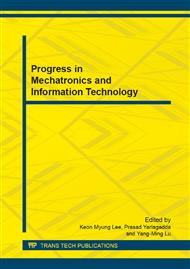p.182
p.187
p.193
p.198
p.203
p.209
p.217
p.225
p.230
State Evaluation of Diesel Engine Using Genetic Algorithm for the Feature Selection and Optimize
Abstract:
As for diesel engine fault diagnosis, it is more difficult to select the appropriate feature. In the paper, using the main parts state such as cylinder, piston and piston ring to diagnosis the fault of diesel engine. Eigenvalue is vital to the precision and efficiency fault diagnosis, the normal method to find the fault diagnosis eigenvalue is simulation experiment. Since the number of experiment cannot be too much, bootstrap is introduced in the paper, then using Genetic Algorithm, an optimum parameter combination has been received.
Info:
Periodical:
Pages:
203-208
Citation:
Online since:
November 2013
Authors:
Keywords:
Price:
Сopyright:
© 2014 Trans Tech Publications Ltd. All Rights Reserved
Share:
Citation:


